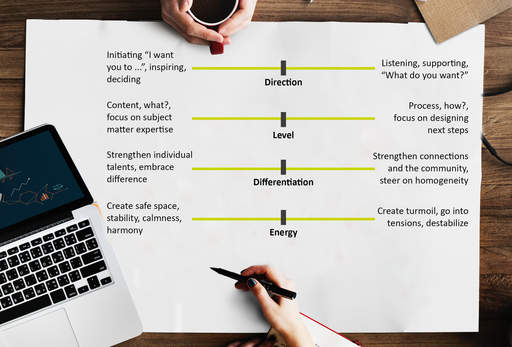
Deze pagina is niet beschikbaar in het Nederlands. - Bekijk in het Engels:
When the concept of situational leadership was first introduced, it had a major contribution in seeing that successful leadership depends on the leader’s ability to adjust his style to the ‘situation’ – in fact, to the one being led. By that, it made the concept of leadership more flexible – moving beyond the idea of the one-size-fits-all character traits of the successful leader.
50 years and a whole number of insights further, we can now see leadership much more as an interaction between people, and its success depending on all sides. Our in-use image of the leader now includes women much more than it did 50 years ago.
Transformation
Today, we see companies in a major transformation. In retail, for example, the old business models, built on smart marketing and formats and highly efficient supply chains are being augmented, and replaced, by digital business models. The first set of models rely on reasonable stable environments and predictability, the latter operate in a much more complex and volatile setting. The challenge is, that both models will co-exist for the foreseeable future – and that they require fundamentally different ways of leading.
In a conversation I had a couple of weeks ago with Nicholas Brassey, Ahold Delhaize’s CHRO Europe & Indonesia, we discussed how we could best grasp the leadership that was necessary in this transformed organizational reality, with the co-existence of business models. And that is how we came back to the starting point of situational leadership: the idea that what is the most promising course of action in a leadership situation might be different from one situation to the other.
The fact that this insight sounds like an open door is already interesting – because a whole tradition on leadership research is built on the contrary assumption. But anyway.
So, we thought, we would need to look into what we perceive of as ‘situation’, and if we can describe the different courses of action that might be needed.
Moment
‘Situation’, in situational leadership 2.0, is probably much more ‘situation’ as in ‘moment’, than as in ‘setting’. 50 years ago, what was called ‘situation’ was more like a reasonably stable setting, with variables that characterize the ability and willingness of the one being led. That setting could change with each person, but that change was probably more a question of days and weeks.
In our perception, with complex and rapidly changing environments, we will need to see ‘situation’ much more as ‘moment’. Whereas in one interaction sequence of half-a-minute or so, the most promising leadership behavior might be very initiating, just a minute later, the most promising strategy might be mainly supportive.
Dimensions
Secondly, in situational leadership 2.0, the variables that determine what is the most promising strategy cannot be reduced to a neat 2x2 matrix. What can be done, though, is describe these different ‘most promising strategies’ as dimensions on which leaders, consciously or unconsciously choose.
In our discussion, we differentiated four of these dimensions:
- Direction: in some moments, the most promising strategy will be in offering direction to the other, initiating, ‘I want you to …’ energy. In other moments, what works best is purely supportive, following, ‘What do you want? How can I support you?’ energy, and everything in between. That style could even change within a sentence, starting with what I want, shifting to inquiring about the position of the other.
- Level: in some moments, focusing on content will be most successful, on what should be decided or done. At other times, what is needed is a focus on process, on how one should go about the question at hand.
- Differentiation: sometimes, embracing individual solutions, difference, heterogeneity, focusing on that everyone is different is what is needed. At other times, connecting people and solutions, steering towards homogeneity, community, the collective is what brings about the best results.
- Energy: leaders sometimes can best create stability and calmness, safe spaces, harmony. At other times, they will need to stimulate productive turmoil, go into tensions rather than avoiding them, promoting instability and change.
Whereas the frustrating aspect of this framework might be that it does not offer definite answers, we have found it to be helpful in that it asks productive questions.
Effective leadership in today’s complex environments can play on the dimensions described above. From one moment to the other, the emphasis may shift on any one of the dimensions. In addition, what might also shift is the leadership itself; effective leadership is no longer tied to one person, but it in itself can shift throughout the course of an interaction.
Work-in-progress
I am writing about this model as work-in-progress, and as we start gathering more experience on how to work with it in our different practices. My main intention in writing now is because I am curious about related thinking and insights.
